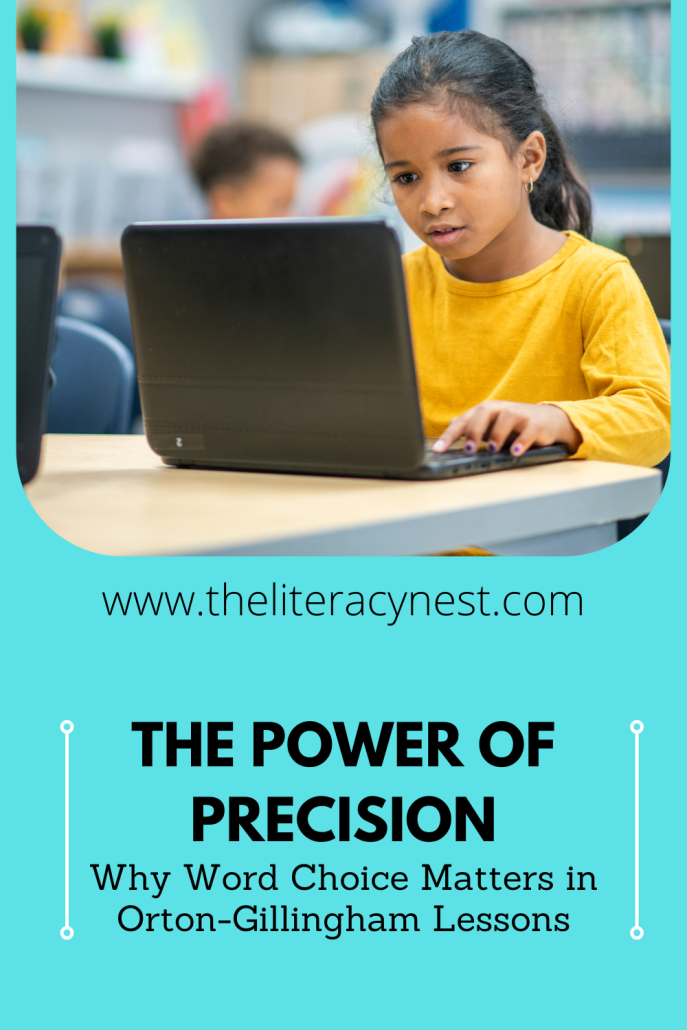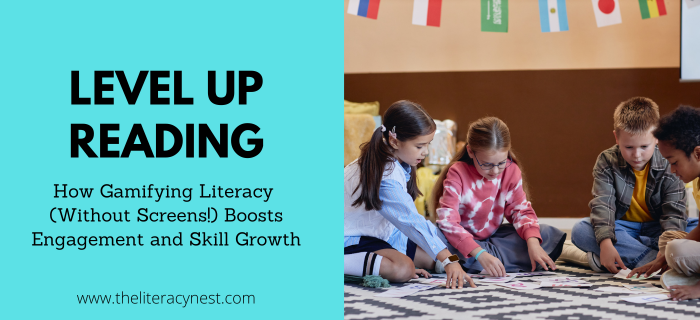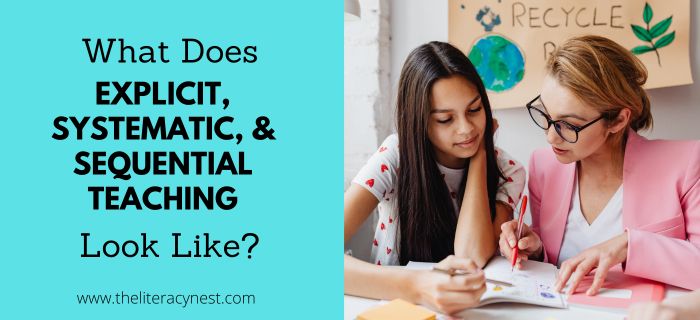Power of Precision: Why Word Choice Matters in Orton-Gillingham Lessons
As Orton-Gillingham teachers, we know how much every little thing we say can matter. Sometimes, we forget just how much weight our words carry when teaching students with dyslexia or other language-based learning differences. So much time is spent planning multisensory activities, prepping materials, and setting up routines. If we aren’t being intentional with our word choice, we could be confusing our students. Most of the time, we may not even realize we are! Luckily, with a few small shifts, we can be precise with OG instruction, and it will make all the difference.
#1 Use Consistent Terminology
You know those OG terms we use all the time? Phoneme, grapheme, digraph, syllable type, base word, suffix. It might feel repetitive to us, but for our students, that repetition builds a mental map.
Instead of switching between terms like “letter team,” “sound chunk,” or “blend,” stick with the word choice you want students to use. If you do use other terms, take a second to explain what it means. Precision in word choice doesn’t mean you have to talk like a textbook. Honestly, it means you’re building clarity instead of confusion.
#2 Be Specific, Not Vague
We’ve all used the word choice: “Sound it out!” But let’s be honest—what does that even mean?
Instead, try: “Touch under each grapheme and say the sound.” It gives the student a clear action to take—and teaches them what decoding really looks like.
Or if a student says the wrong sound, don’t just say “Try again.” Instead, say: “That’s the letter ‘b,’ but you said /d/. Let’s fix it together.” It takes a few extra seconds, but those seconds matter.
#3 Name the Skills Out Loud
Let students in on what they’re learning.
Say things like:
“We are segmenting phonemes.” or “You just added a suffix.”
Over time, they’ll start using these terms, too.
When students hear precise word choice regularly, they’ll start using it too. It helps them take ownership of their learning, and builds confidence over time.
Thankfully, the Orton-Gillingham Interactive Notebook helps with this as well. The interactive notebook encourages students to interact with terms through visual anchors, interactive templates, and reflection prompts. They can label syllable types, record rules in their own words, and even review vocabulary with built-in strategy reminders. Honestly, it’s a great tool to keep your OG word choice consistent.
#4 Avoid Misleading Word Choice
Sometimes we say things that are mostly true… but not always true. Like, “Every word has a vowel.”
Tell that to the word rhythm.
Oversimplifying rules might feel helpful in the moment, but it can lead to confusion down the line. Instead of catchy but inaccurate phrases, aim for word choice that’s both clear and correct.
#5 Reinforce with Visuals
OG learners thrive on visuals. Pairing your word choice with charts, diagrams, and hands-on tools helps make those terms stick.
If you’re using terms like “closed syllable” or “digraph,” make sure students can see examples of them on your anchor charts, sound walls, or in their interactive notebooks. When your visuals match your word choice, your students have another way to connect the dots.
#6 Model Clear Corrections
Okay, now hear me out. This one is BIG. When a student makes a mistake, don’t just say, “Nope, try again.” As OG teachers, we have to be specific.
Try something like: “You said /ch/, but this is the digraph ‘sh.’ Let’s look at the grapheme again.”
It builds trust, teaches the concept, and reinforces the correct term—all in one sentence.
Want to See Precise Word Choice in Action?
If you’re wondering how to use more precision in language, check out this quick video I made:
▶️ Watch: Why Word Choice Matters in OG Lessons
In just a few minutes, you’ll see how small tweaks in your word choice can lead to big changes in how your students engage and understand OG lessons.
Take Your Word Choice from Good to Great
Being precise doesn’t mean being perfect or robotic—it just means being intentional. When we’re careful with our word choice, we create a safe and structured learning environment where students can grow.
Remember: You don’t have to figure all this out on your own. Do you want more help modeling precise language, setting up structured routines, and giving your students the tools to be independent readers?
Join the BRFL Academy for just $1 for your first 30 days! Inside, you’ll find video trainings, lesson demos, printables, and a community of OG-aligned teachers who get it. 👉 Click here to check out the Academy
And if you’re looking for a student-centered tool that brings all this together, don’t forget about the Orton-Gillingham Interactive Notebook. It helps keep your word choice clear, your students engaged, and your lessons organized.
You’ve got this—and I’m cheering you on every step of the way.







